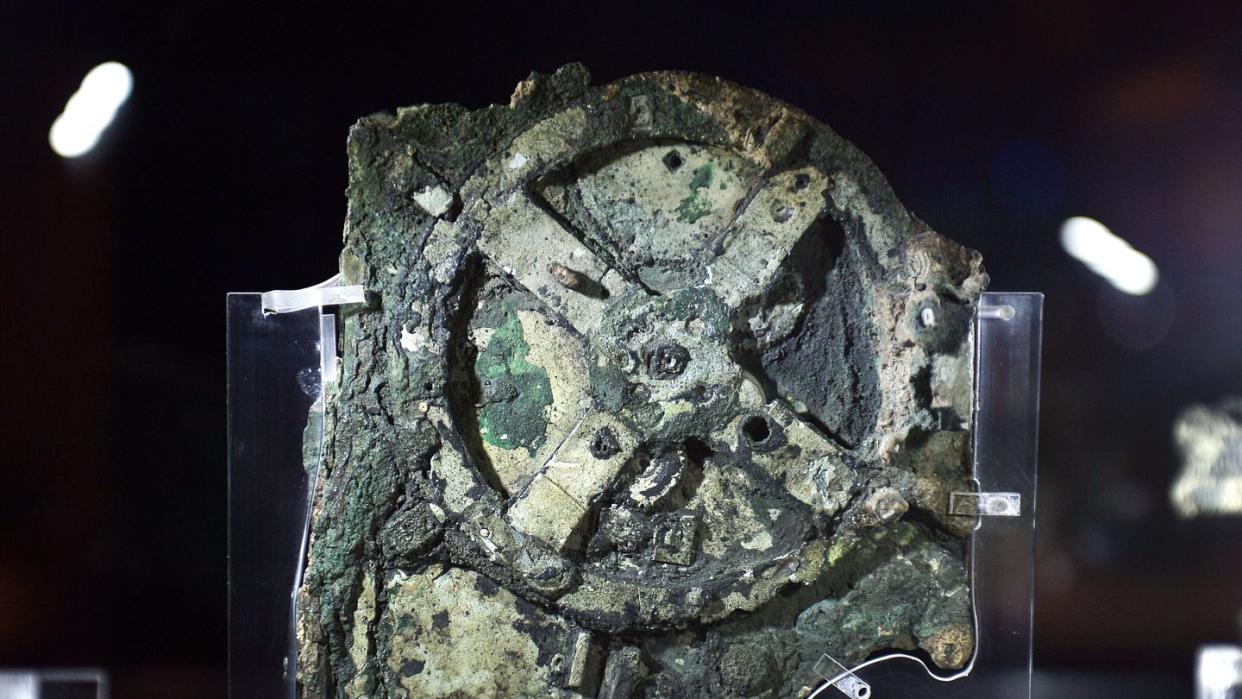Scientists Found a Hidden Computer From the Roman Empire—and Solved Its Mysterious Secret

- Oops!Something went wrong.Please try again later.
Built around the beginning of the 1st century BCE, the Antikythera Mechanism is the oldest known analog computer in human history, and there’s an enduring mystery surrounding what it was used for.
Now, scientists from the University of Glasgow have leveraged advanced statistical analysis—even employing techniques used to analyze gravitational wave signals—to lend credence to the theory that the mechanism actually calculates the lunar calendar.
This study also highlights the immense sophistication required to create such an object during the time of the Roman Republic.
When did the history of computing begin? The 1945 creation of the first programmable computer, ENIAC, is a good guess. Or maybe we stretch it back to Charles Babbage and Ada Lovelace’s work on the analog Analytical Engine in the 1830s. Heck, why not throw in Jacquard’s Loom at the turn of the 19th century while we’re at it?
It turns out that the true beginning of computing isn’t in the 18th century or the 17th—or even the 7th, for that matter. No, it all begins (as many things do) with the Roman Empire, and a little machine known as the Antikythera Mechanism. Discovered in a shipwreck off the coast of a small Aegean island called Antikythera in 1901, this sunken, barnacled device was likely built around the beginning of the first century BCE, and appears to contain an impressive complexity of gears all thought to have worked in unison to calculate … something.
Now, thanks to new research leveraging statistical methods like Bayesian analysis—as well as techniques developed to study gravitational waves, the ripples in spacetime caused by merging black holes, colliding neutron stars, and supernovae—scientists from the University of Glasgow believe the Antikythera Mechanism, the first analog computer in human history, calculated the lunar calendar. The results of their research were published in The Horological Journal.
Although the Antikythera Mechanism is a well-known archaeological wonder, the inspiration for this research by Graham Woan and Joseph Bayley came from an unlikely source. A YouTuber named Chris Budiselic, who runs the channel Clickspring, embarked on a several episode journey to recreate the Antikythera Mechanism, inspiring Woan and Bayley to use their particular expertise to investigate the device further.
“A colleague pointed me to data acquired by YouTuber Chris Budiselic, who was looking to make a replica of the calendar ring and was investigating ways to determine just how many holes it contained,” Woan said in a press statement. “It struck me as an interesting problem, and one that I thought I might be able to solve in a different way during the Christmas holidays, so I set about using some statistical techniques to answer the question.”
Meanwhile, Bayley applied techniques used to analyze data from the Laser Interferometer Gravitational-Wave Observatory (LIGO), and the two were able to determine that the original Antikythera Mechanism likely contained somewhere between 354 to 355 holes that correspond to the number of days in a lunar calendar, arranged in a circle with a radius of 77.1 mm (give or take ⅓ of a millimeter). Amazingly, this means that each hole was precisely positioned, with only 0.028mm between each one.
“Previous studies had suggested that the calendar ring was likely to have tracked the lunar calendar, but the dual techniques we've applied in this piece of work greatly increase the likelihood that this was the case,” Bayley said in a press statement. “It’s given me a new appreciation for the Antikythera mechanism and the work and care that Greek craftspeople put into making it—the precision of the holes’ positioning would have required highly accurate measurement techniques and an incredibly steady hand to punch them.”
Although historians believe that ancient Greeks (under the rule of the Romans) built this computer, no one is sure who could’ve pulled off such a wonder of engineering—though, theories of famous Greek mathematicians such as Hipparchus or Archimedes have been bandied about. Today, this incredible computer rests in the halls of the National Archaeological Museum in Athens, not far from where it was originally discovered, as a testament to the incredible ingenuity of the ancient world.
You Might Also Like

